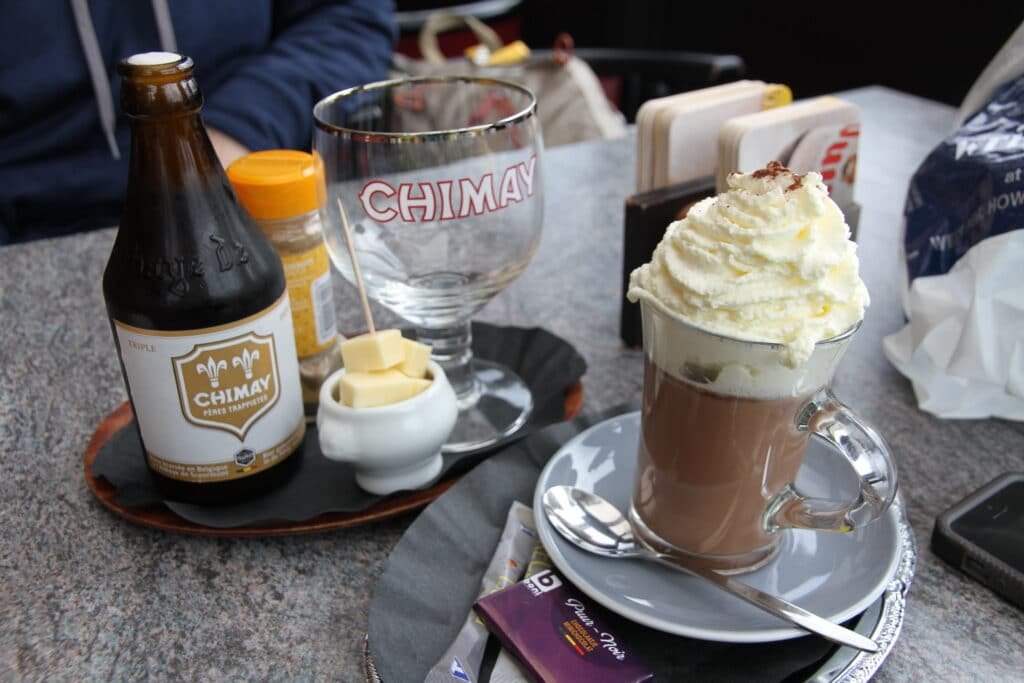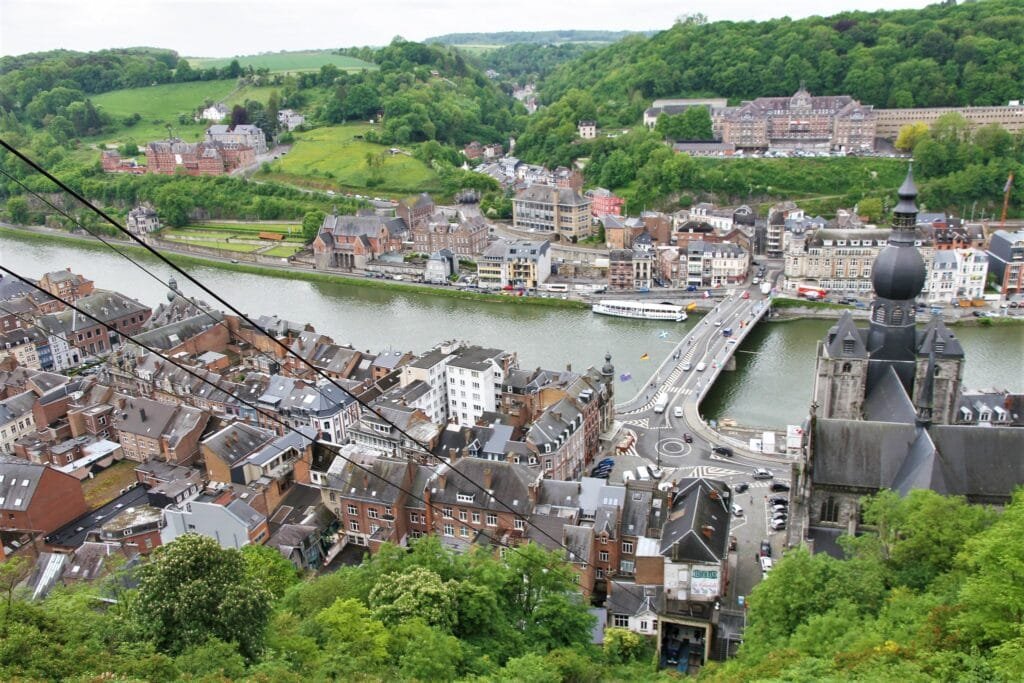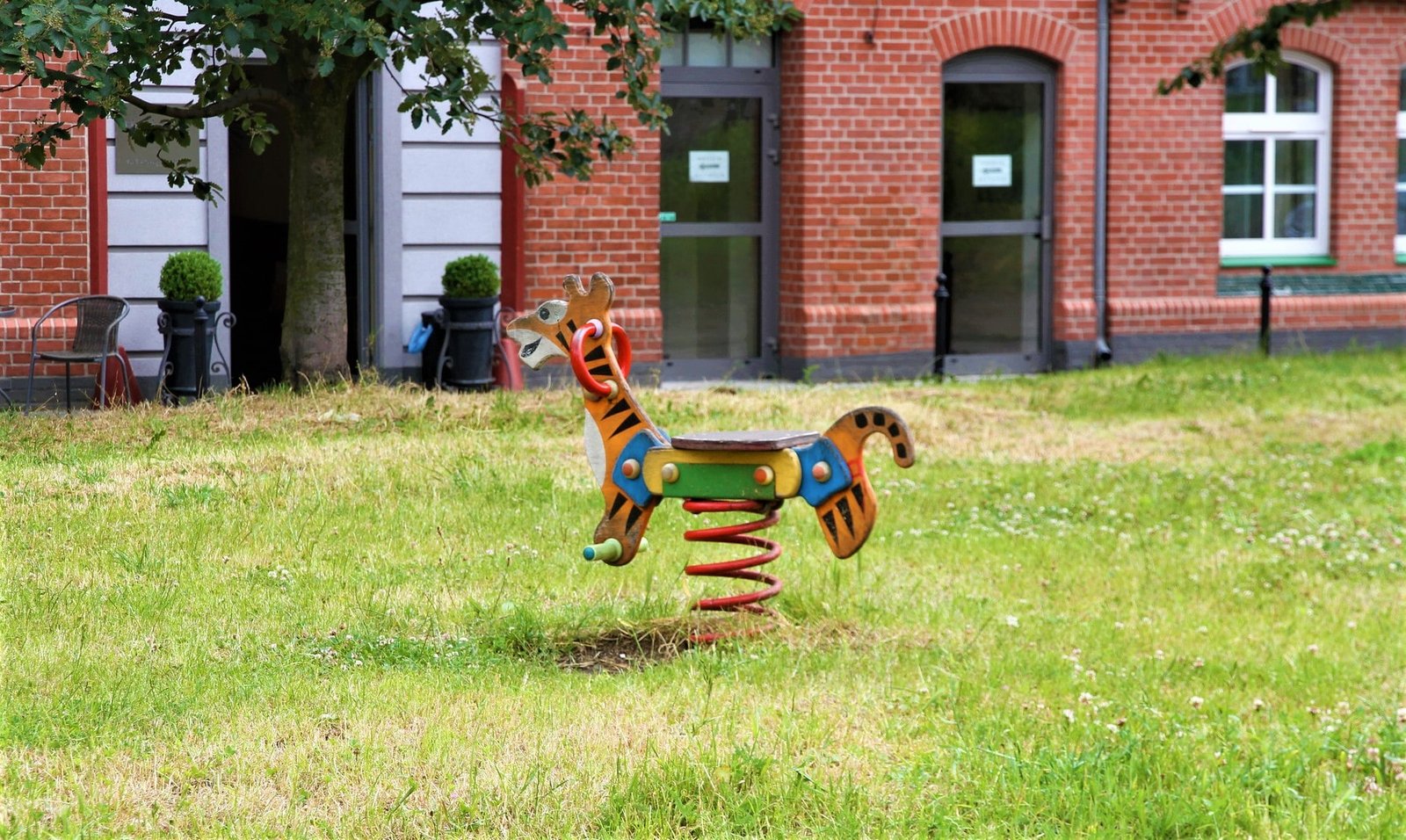We absolutely love Belgium! Despite its tiny size, the country packs a lot, and spending 8 days there was barely enough to scratch the surface. With the size of Maryland, Belgium has three very distinct regions: Dutch-speaking Flanders in the north, French-speaking Wallonia in the south, and the capital city of Brussels in the center of the country. Take a 20-minute train ride and you would think you are in a different country as people around you speak a different language. Most people who go to Belgium tend to visit Flanders and Brussels, where the sights are truly impressive. Ghent, with its beautiful limestone medieval architecture, exquisite merchant houses, and youthful energy of a university town, perennially competes for attention with a romantic Brugge with its red brick medieval architecture, dreamy canals, and abundant chocolate shops. The port city of Antwerp boasts one of the most beautiful train stations in all of Europe, a busy port, and is loaded with history, Rubens art, and restaurants offering delicious mussels and fries on every corner. And of course, people also drop by the capital city of Brussels to admire one of the best squares in all of Europe, Grand Place, and visit Royal Palace and the city’s numerous museums. Belgium’s French-speaking region of Wallonia, on the other hand, gets almost no love and is largely overlooked by visitors. We enjoy going to places off-the-beaten trail and decided to give Wallonia a chance and spent two days in this undiscovered and mostly ignored corner of Europe.

Namur
Laidback and undeveloped, Wallonia feels like worlds away from its busy and bustling northern neighbors of Flanders and Brussels. Life is much simpler here. People are not rushing, and life moves at the pace of snails that are in abundance on the Wallonian streets after rain. People from Flanders consider Wallonia to be the backwaters of Belgium and often look down on its people, citing the economic might of the northern lands that provides a continuous lifeline to the economically stagnant south. When we arrived at our Airbnb in Ghent and told our host that we just arrived from visiting Wallonia, she looked at us wide-eyed, “Oh! Why? Do you have relatives in Wallonia?” We laughed, but she wasn’t kidding. She honestly couldn’t think of any reason to visit the south except for a family visit.
In two short days, we managed to visit three towns in Wallonia: Namur, Dinant, and Huy. Unlike Flanders, Wallonia is not heavy on sights and does not have “must-sees”. You can easily visit each town in just a couple of hours. The best way to experience Namur, the capital of Wallonia, is by getting lost in its streets, exploring the town’s impenetrable citadel sitting atop cliffs, and getting familiar with French-inspired and luscious cuisine at Brasserie François. Dinant, the hometown of Adolphe Sax, the inventor of the saxophone, has a beautiful riverfront dominated by an imposing church with an elongated onion dome, and you can explore the town’s citadel by taking the cable car up the adjacent cliffs. Huy is just a charming town, where you can just sit, relax, and sip a Trappist beer brewed by monks and do nothing but people-watch or, if you still have not gotten your citadel fix after visiting Namur and Dinant, climb to see another citadel. The lack of “big” sights and a leisurely way of life is not a drawback but a strong side of Wallonia. There is something admirable in the slowness of life here and taking a break from an otherwise high pace of modern life is an attraction on its own.

Enjoying a Trappist Beer in Huy
Another advantage that Wallonia holds over Flanders is its nature. Unlike the flat and somewhat dull landscapes of Flanders, Wallonia is ringed by hills, mountains, and cliffs, providing perfect locations for citadels, defensive enforcements, and gorgeous viewpoints. Yet, the best natural attraction in Wallonia is the Meuse River which beautifully circles, snakes, and spirals through the region like a rhythmic gymnastics ribbon, creating incredible vistas and picturesque locations for all three towns that we visited in Wallonia.
We also surprised ourselves by preferring Wallonia’s food over Flemish cuisine. While nearly all Belgian cities and towns offer traditional waffles, potato fries with mayonnaise, and an unending selection of Belgian beers, Flemish cuisine is understandably tilted towards Dutch cuisine, and its classic dishes such as stoverij (beef stew), gentse waterzooi (Ghent’s fish/chicken stew) are heavy and hearty and include boiled meat and potatoes. Wallonia’s proximity to France positively reflects on the Wallonian cuisine, making it more refined than the cuisine of its northern neighbor. And maybe the differences between Flemish and Wallonian cuisines are not very drastic (we spent only 2 days in Wallonia after all and do not claim to be experts), but our favorite restaurant in the entire Belgium was Brasserie François in Namur, where the food was delicious, sophisticated, and French-influenced. We enjoyed the food in that restaurant so much that we ate there twice during our two-day visit to Wallonia.

Dinant
The architecture of Wallonia has also its distinct style. Unlike traditional Flemish architecture inspired by Dutch architecture of skinny houses with red tile roofs, the architecture of Wallonia is more austere and reserved with grey roofs of Wallonian towns transporting you to the northern provinces of France.
All in all, Wallonia may not be high on tourists’ list of places to visit, but if you have a couple of days to spare, the region is worth dropping by. If you plan your Belgian vacation, consider Wallonia as a place to start your trip. Dealing with jetlag and time zone adjustment is better in a slow-moving region that nevertheless provides enough sightseeing and decent traveling experiences. And getting off the beaten track is always an adventure.

